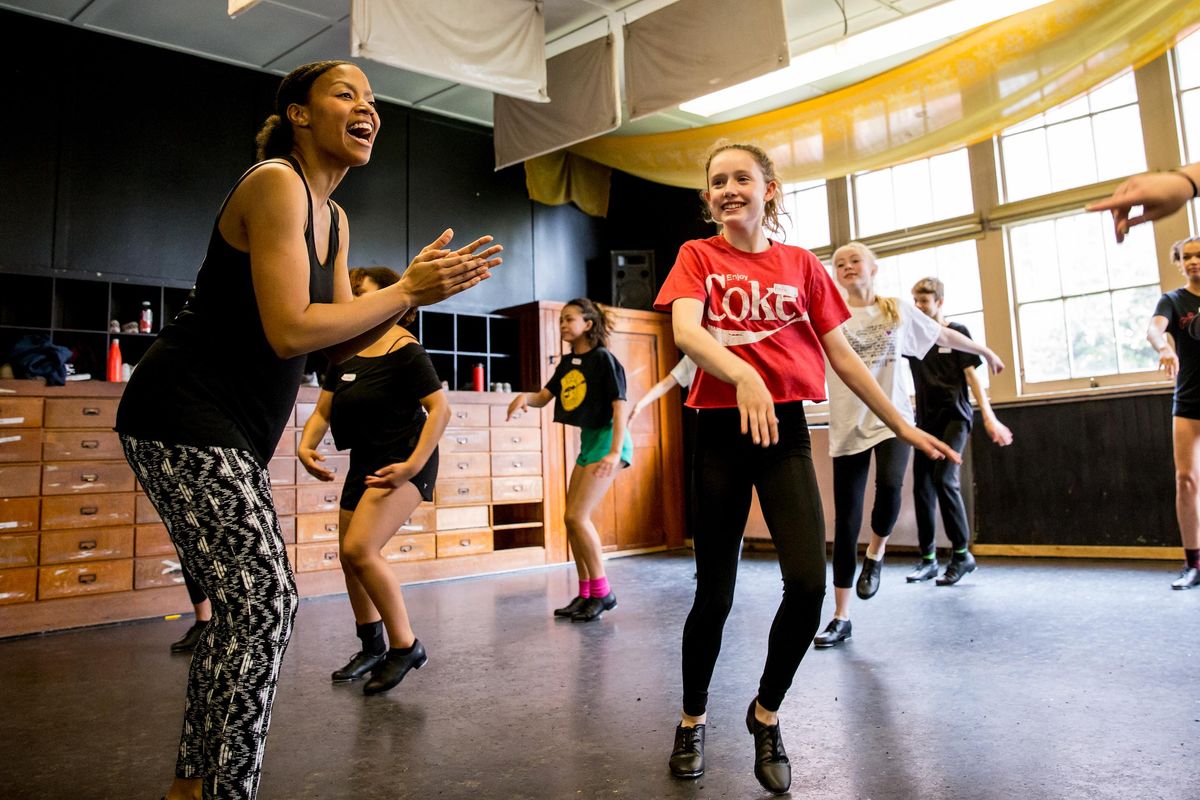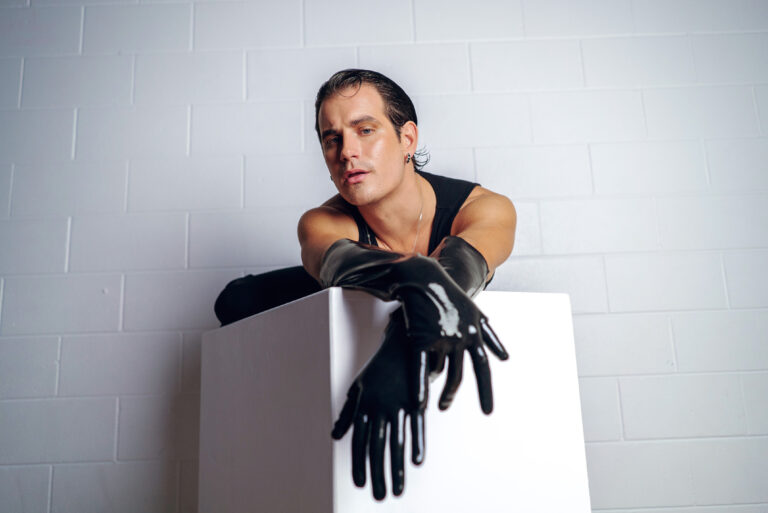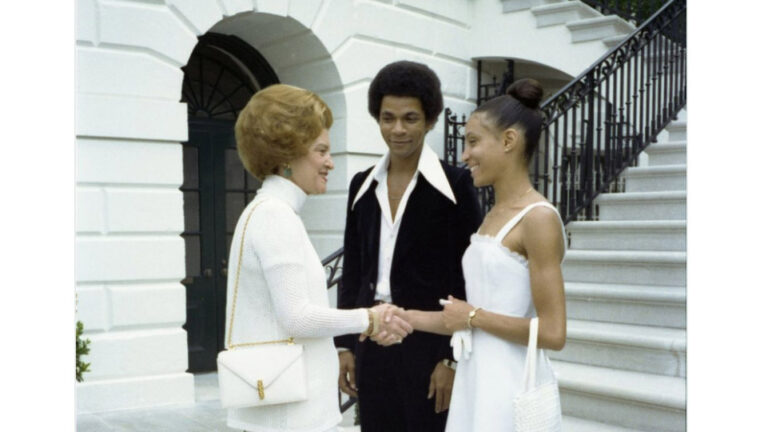
When the murder of George Floyd in Minneapolis last May catalyzed nationwide protests against systemic racism, the tap community resumed longstanding conversations about teaching a Black art form in the era of Black Lives Matter. As these dialogues unfolded on social media, veteran Dorrance Dance member Karida Griffith commented infrequently, finding it difficult to participate in a meaningful way.
“I had a hard time watching people have these conversations without historical context and knowledge,” says Griffith, who now resides in her hometown of Portland, Oregon, after many years in New York City. “It was clear that there was so much information missing.”
For example, she observed people discussing tap while demonstrating ignorance about Black culture. Or, posts that tried to impose upon tap the history or aesthetics of European dance forms.
Finally compelled to speak up, Griffith led a virtual seminar in June for the entire dance community entitled “Racism and the Dance World.” Over a thousand people viewed her presentation, which was inspired in part by the mentorship of longtime family friend Dr. Joy DeGruy, an expert on institutionalized racism. Floored but encouraged by such a large turnout, Griffith quickly prepared a follow-up seminar, which also had a positive response.
“Teachers kept reaching out to me and saying, How do I talk to my students about this? They don’t care about anything but steps,” she says.
In response, Griffith designed a six-week professional-development program—Roots, Rhythm, Race & Dance, or R3 Dance—for teachers of any style seeking ways to introduce age-appropriate concepts about race and dance history to their students. The history of the art form, she points out, is the context in which we all teach and perform every day.

Annika Abel Photography, courtesy Griffith
“The white hip-hop teacher asking why Black people are trolling them on Instagram happens against the same backdrop as Tamir Rice holding a pellet gun and not surviving a confrontation with police,” she says. “We try to see them as separate things, but they’re really not.”
R3 Dance isn’t the first program Griffith, a 43-year-old mother of two, created for teachers. Since 2018, she has run the Facebook group “Dance Studios on Tap!,” a space for sharing struggles and successes in the classroom, teaching tips and ideas on growing studio tap programs.
She has also offered a 10-week, online teacher training program, “Tap Teachers’ Lounge,” since 2018. Through lecture-demonstrations, discussions, dance classes and workshop sessions, Griffith helps studio instructors increase student enrollment, engagement and success in their tap programs.
“I had started to feel what so many professionals know from experience,” she says. “There are huge gaps in people’s training, and teachers don’t get the benefit of individualized, process-oriented feedback about their pedagogy, especially when it comes to tap dance.”
Griffith knew she could help fill in many of those gaps. She also suspected her resumé would appeal to a variety of tap teachers: Some might be impressed by her teaching credits at Pace University and Broadway Dance Center, while others would notice her experience with the Rockettes and Cirque du Soleil, or her connections to tap artists such as Chloe Arnold and Dormeshia.
Griffith also knew that many tap teachers are the sole tap instructors at their studios and have few opportunities to attend tap festivals or master classes. With her programs, they can learn exclusively online, without having to travel, while still teaching their weekly classes.
A key feature of the teacher training program is that participants submit video of exercises they’ve been working on and get feedback from Griffith. They’re expected to implement that feedback and report back on their progress the following week. For Griffith, that accountability is a cornerstone of her pedagogy.
“Teaching is a practice—you have to put it on its feet, you have to do it,” she says. “I want to give teachers the tools they need for their practice, and then talk about how that practice informs their preparation in the future, just like how you would teach anything else.”

Annika Abel Photography, courtesy Griffith
Griffith takes a similar approach for R3 Dance, which last year included 180 participants from around the world working in public schools, private studios, universities and other settings, teaching both tap and social dance. Teachers might bring an anti-racist statement they’re drafting for their studio, for example, or a lesson plan or proposed changes to a college syllabus.
Griffith also gives teachers the knowledge to confidently structure and lead conversations about race in the dance industry. Participants typically come with a range of comfort levels in discussing race, says Griffith, some just beginning to comprehend race as a factor in dance. Others have read books and watched documentaries but don’t know how to translate what they’ve learned into lessons. Some worry that starting difficult conversations with colleagues or students will get them fired or reprimanded.
But Griffith says she’s been encouraged by the ways in which participants have reflected on everything from their costuming and choreography to their social media presence and hiring practices as a result of the program.
“It’s been really inspiring to see more teachers taking this part of history with the gravity that it deserves—not in a way that makes them cry, but that makes them get to work,” she says.
For instance, Maygan Wurzer, founder and director of All That Dance in Seattle, Washington, found her studio’s diversity and inclusion program enhanced after attending R3 Dance with two of her colleagues. This includes a living document where all 19 instructors share materials that they’re using to diversify their curriculum, such as lessons on tap and modern dancers of color, and asking teen students to research the history of race in various dance genres and present their findings.
These changes address a common problem that Griffith notices: Teachers give lessons on certain styles, steps or artists without providing sufficient historical context. For example, it’s important to know who Fred Astaire and the Nicholas Brothers were, but it’s equally vital to understand how racism contributed to the former having a more prominent place in the annals of dance history.

Annika Abel Photography, courtesy Griffith
“Topics like privilege and cultural appropriation need the same kind of thought and vision as teaching technique,” she explains. “You have to layer those conversations, just like you wouldn’t teach fouetté turns to a level-one student.”
For educators who have finished one or both of her programs, Griffith is scheduling regular meetings to discuss further implementation strategies and lead additional workshopping sessions.
“As educators, we’re excavators who bring out what we can in our students,” she says. “But sometimes our tools get dull, and we need to keep sharpening them.”
Ultimately, Griffith says that this work has been empowering not just for her students but also for her.
“Dance teachers are completely fine with being uncomfortable and taking feedback,” she says. “I found an energy to do this work because there are so many people who are willing to do it with me.”






